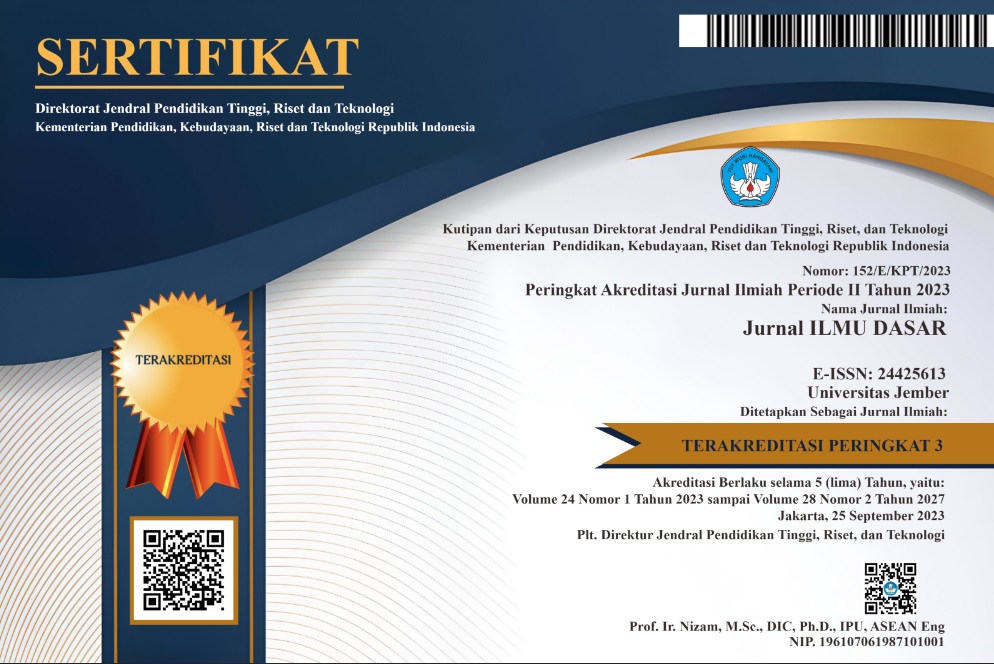Characterization of Edamame Indigenous Rhizobia as a Candidate of Biofertilizer
Abstract
Five isolates, named R1, R3, R4, R6 and R7, were successfully isolated from leguminous edamame nodules, and characterized as indigenous rhizobia bacteria. All isolates were grown in a YEMA medium containing antibiotics ampicillin, streptomycin, rifampicin, tetracycline, chloramphenicol or penicillin. Cultivation revealed that R3 can grow in a medium containing all antibiotics, but not for R1 when they grow in a medium containing rifampicin. R7 could not grow when the medium contain streptomycin and rifampicin. Furthermore, R4 and R6 only grow at medium containing tetracycline. it seemed that R1 and R3 are more resistant against some antibiotics comparing with others. When YEMA containing bromthymol blue 1% medium was used, R1 produced the yellowish acid and R3 produced blue alkali. R1 also utilized dulcitol and Lhistidin as carbon and nitrogen source. R3 utilize the carbon source from dulcitol but cannot utilize the nitrogen source from L-histidin. Base on these results above, it can be suggested that R1 and R3 identified as Rhizobium leguminosarum and Bradyrhizobium japonicum.
Published
2009-01-03
How to Cite
ARIMURTI, Sattya.
Characterization of Edamame Indigenous Rhizobia as a Candidate of Biofertilizer.
Jurnal ILMU DASAR, [S.l.], v. 10, n. 1, p. 30-37, jan. 2009.
ISSN 2442-5613.
Available at: <https://jurnal.unej.ac.id/index.php/JID/article/view/172>. Date accessed: 22 dec. 2024.
Issue
Section
General
Keywords
indigenous Rhizobia; Rhizobium leguminosarum; Bradyrhizobium japonicum












